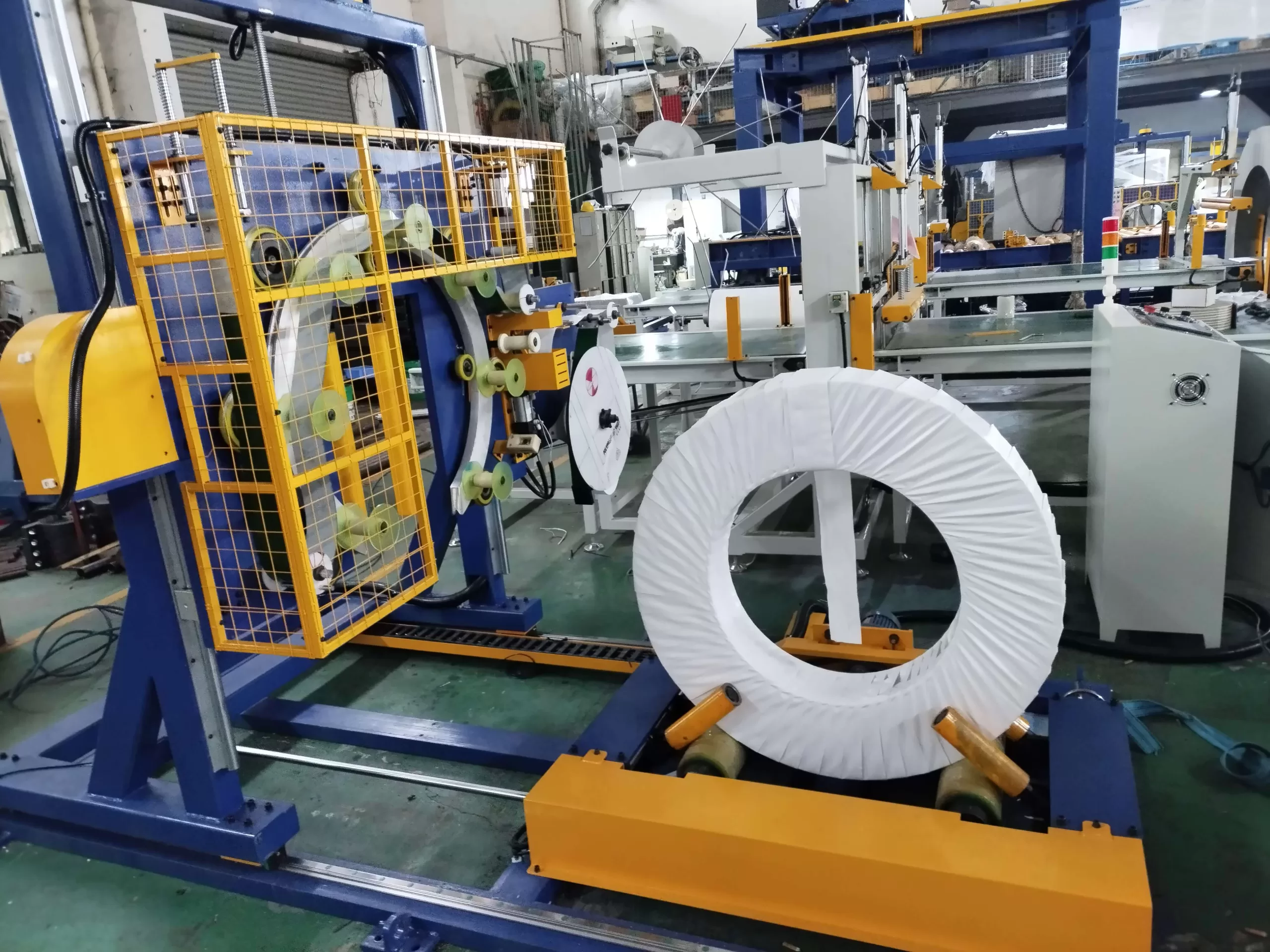Optimizing Coil Protection: A Guide to Coil Wrapping and Stretch Wrapping Machinery
Protecting coils of steel, aluminum, wire, or other materials during storage and transit is critical to maintaining product quality and preventing costly damage. Scratches, corrosion, moisture intrusion, and contamination can compromise the integrity and value of these essential industrial products. Automated coil wrapping machinery, including specialized coil stretch wrappers, provides a robust solution for safeguarding coils effectively and efficiently.
Understanding Coil Wrapping Technologies
While often used interchangeably, it's helpful to distinguish between different types of coil wrapping systems:
Coil Stretch Wrappers
A coil stretch wrapper is specifically designed to apply stretchable plastic film (like LLDPE) around the coil. Typically employing an orbital wrapping method, the film dispenser travels through the eye of the coil, tightly encasing it. This process creates a secure, conforming layer that offers excellent protection against dust, dirt, moisture, and minor physical damage, while also enhancing load stability.
General Coil Wrapping Machines
This broader category encompasses machines that may use various protective materials beyond just stretch film. Depending on the application and required level of protection, these machines can apply:
- VCI Paper/Film: Volatile Corrosion Inhibitor materials release compounds that prevent rust and corrosion, crucial for ferrous metals.
- Plastic Film (Non-Stretch): Polyethylene or other films providing barrier protection.
- Paper: Kraft paper or other paper types for basic wrapping or interleaving.
- Woven Fabrics/Metal Mesh: For heavy-duty protection or specific containment needs.
These machines can wrap coils in different orientations (eye-to-sky or eye-to-wall) and often accommodate a wider range of coil sizes and material types.
Key Benefits of Automated Coil Wrapping Systems
Transitioning from manual wrapping methods to automated machinery offers significant advantages:
- Enhanced Product Protection: Consistent application of protective materials creates a reliable barrier against environmental factors like moisture, dust, and contaminants. Specialized materials like VCI drastically reduce the risk of corrosion, preserving the coil's surface finish and structural integrity.
- Improved Operational Efficiency: Automated systems wrap coils much faster and more consistently than manual labor. This increases throughput, reduces bottlenecks in the packaging line, and allows personnel to be reassigned to higher-value tasks.
- Reduced Operational Costs: Automation minimizes material waste by applying wrapping materials precisely. It significantly lowers labor costs associated with manual wrapping and drastically reduces the financial impact of replacing or reworking coils damaged due to inadequate protection.
- Increased Workplace Safety: Manual handling of heavy coils and bulky wrapping materials poses ergonomic risks and potential for injury. Automated systems confine these tasks within the machine, reducing manual lifting, repetitive motions, and contact with sharp edges, thereby improving overall plant safety.
- Superior Load Stability: Tightly wrapped coils are more stable units, less likely to shift or unravel during handling, storage, or transport. This is crucial for safe loading/unloading and maintaining stack integrity.

steel packing machine5 Selecting the Appropriate Coil Wrapping Solution
Choosing the right machine depends on several factors specific to your operation:
- Coil Specifications: Consider the range of inner/outer diameters, widths, and maximum weights of the coils you handle.
- Required Throughput: Determine the number of coils needing wrapping per hour or shift to ensure the machine meets production demands.
- Packaging Material Needs: Identify the primary type of protection required (e.g., basic containment, moisture barrier, corrosion prevention) to select a machine compatible with the necessary materials (stretch film, VCI, paper, etc.).
- Level of Automation: Decide whether a semi-automatic or fully automatic system (integrated with conveyors, banding, labeling) best suits your workflow and budget.
- Loading and Handling: Ensure compatibility with existing loading methods, such as overhead cranes or forklifts. Some systems offer features like easy loading by crane.
 Caption: Automated coil stretch wrappers ensure consistent and secure packaging.
Caption: Automated coil stretch wrappers ensure consistent and secure packaging.
Essential Operational Features
When evaluating specific machinery, consider these capabilities:
- Material Versatility: The ability to handle different packaging materials (e.g., film, paper) provides flexibility.
- Multi-Layer Wrapping: Options for applying multiple layers (e.g., inner VCI layer + outer protective film layer) enhance protection.
- Heavy Loading Capacity: The machine structure and drive system must safely handle the maximum weight of your coils.
- Safety and Ease of Use: Look for safety features (interlocks, guarding) and intuitive controls for straightforward operation and maintenance.
Investing in a suitable coil wrapping machine is a strategic decision for any operation handling metal coils. By ensuring consistent, high-quality protection, businesses can minimize product loss, improve handling efficiency, reduce costs, and enhance workplace safety. A variety of coil wrapping machine solutions exist to meet diverse industrial needs.
For operations handling various coiled products beyond metal, such as steel wire or hose, specialized coil wrapping machine adaptations are often available to provide tailored packaging solutions.